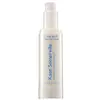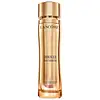What's inside
What's inside
 Key Ingredients
Key Ingredients

 Benefits
Benefits

 Concerns
Concerns

 Ingredients Side-by-side
Ingredients Side-by-side

Benzoyl Peroxide 5%
Water
Skin ConditioningPPG-2 Myristyl Ether Propionate
EmollientArgania Spinosa Kernel Extract
Skin ConditioningPEG-40 Stearate
EmulsifyingSerenoa Serrulata Fruit Extract
Skin ConditioningSesamum Indicum Seed Extract
Skin ConditioningAlcohol Denat.
AntimicrobialSorbitan Stearate
EmulsifyingHydrogenated Methyl Abietate
Methyl Methacrylate Crosspolymer
Carbomer
Emulsion StabilisingGlyceryl Stearate
EmollientCetyl Alcohol
EmollientTetrasodium EDTA
Hydrogenated Lecithin
EmulsifyingCholesterol
EmollientCeramide Ns
Skin ConditioningCeramide NP
Skin ConditioningOleic Acid
EmollientPalmitic Acid
EmollientSodium Ascorbate
AntioxidantSodium Hydroxide
BufferingEDTA
Ethylhexylglycerin
Skin ConditioningPhenoxyethanol
PreservativeBenzoyl Peroxide 5%, Water, PPG-2 Myristyl Ether Propionate, Argania Spinosa Kernel Extract, PEG-40 Stearate, Serenoa Serrulata Fruit Extract, Sesamum Indicum Seed Extract, Alcohol Denat., Sorbitan Stearate, Hydrogenated Methyl Abietate, Methyl Methacrylate Crosspolymer, Carbomer, Glyceryl Stearate, Cetyl Alcohol, Tetrasodium EDTA, Hydrogenated Lecithin, Cholesterol, Ceramide Ns, Ceramide NP, Oleic Acid, Palmitic Acid, Sodium Ascorbate, Sodium Hydroxide, EDTA, Ethylhexylglycerin, Phenoxyethanol
Water
Skin ConditioningGlycerin
HumectantButylene Glycol
HumectantBifida Ferment Lysate
Skin ConditioningBis-PEG-18 Methyl Ether Dimethyl Silane
EmollientAlcohol Denat.
AntimicrobialPEG/PPG/Polybutylene Glycol-8/5/3 Glycerin
HumectantHydroxyethylpiperazine Ethane Sulfonic Acid
BufferingCI 77891
Cosmetic ColorantTocopherol
AntioxidantMica
Cosmetic ColorantCoco-Glucoside
CleansingLactic Acid
BufferingHydroxypropyl Tetrahydropyrantriol
Skin ConditioningSodium Hyaluronate
HumectantSodium Hydroxide
BufferingSodium Benzoate
MaskingAdenosine
Skin ConditioningAcetic Acid
BufferingChlorphenesin
AntimicrobialAmmonium Polyacryloyldimethyl Taurate
Emulsion StabilisingLimonene
PerfumingTin Oxide
AbrasiveLinalool
PerfumingBenzoic Acid
MaskingPropylene Glycol
HumectantCaprylyl Glycol
EmollientCarbomer
Emulsion StabilisingPerlite
AbsorbentGeraniol
PerfumingRosa Centifolia Stem Extract
EmollientRosa Damascena Flower Oil
MaskingRosa Centifolia Flower Extract
AstringentRosa Hybrid Flower Extract
Skin ConditioningCitric Acid
BufferingCitronellol
PerfumingCoumarin
PerfumingGlycol Distearate
EmollientGlyceryl Oleate
EmollientGlyceryl Stearate
EmollientParfum
MaskingWater, Glycerin, Butylene Glycol, Bifida Ferment Lysate, Bis-PEG-18 Methyl Ether Dimethyl Silane, Alcohol Denat., PEG/PPG/Polybutylene Glycol-8/5/3 Glycerin, Hydroxyethylpiperazine Ethane Sulfonic Acid, CI 77891, Tocopherol, Mica, Coco-Glucoside, Lactic Acid, Hydroxypropyl Tetrahydropyrantriol, Sodium Hyaluronate, Sodium Hydroxide, Sodium Benzoate, Adenosine, Acetic Acid, Chlorphenesin, Ammonium Polyacryloyldimethyl Taurate, Limonene, Tin Oxide, Linalool, Benzoic Acid, Propylene Glycol, Caprylyl Glycol, Carbomer, Perlite, Geraniol, Rosa Centifolia Stem Extract, Rosa Damascena Flower Oil, Rosa Centifolia Flower Extract, Rosa Hybrid Flower Extract, Citric Acid, Citronellol, Coumarin, Glycol Distearate, Glyceryl Oleate, Glyceryl Stearate, Parfum
Ingredients Explained
These ingredients are found in both products.
Ingredients higher up in an ingredient list are typically present in a larger amount.
Alcohol Denat. is an alcohol with a denaturant property. It is created by mixing ethanol with other additives.
This ingredient gets a bad rep because it is irritating and drying - mostly due to its astringent property. Astringents draw out natural oils in tissue, constricting pores and leaving your skin dried out.
However, alcohol denat. is not all that bad.
Due to its low molecular weight, alcohol denat. tends to evaporate quickly. One study on pig skin found half of applied alcohol evaporated in 10 seconds and less than 3% stayed on skin.
This also helps other ingredients become better absorbed upon application.
Studies are conflicted about whether this ingredient causes skin dehydration. One study from 2005 found adding emollients to propanol-based sanitizer decreased skin dryness and irritation. Another study found irritation only occurs if your skin is already damaged.
Small amounts of alcohol are generally tolerated by oily skin or people who live in humid environments.
The rule of thumb is if this alcohol is near the end of an ingredients list, it will probably not affect your skin much.
Also...
This ingredient has antimicrobial and solvent properties.
The antimicrobial property helps preserve products and increase their shelf life. As a solvent, it helps dissolve other ingredients.
Other types of astringent alcohols include:
Learn more about Alcohol Denat.Carbomer is a polymer of acrylic acid. Its main role is to create a gel consistency.
A high amount of carbomer can cause pilling or balling up of products. Don't worry, most products contain 1% or less of carbomer.
Glyceryl Stearate is a mix of glycerin and stearic acid.
It is used to stabilize the mixing of water and oil ingredients. By preventing these ingredients from separating, it can help elongate shelf life. It can also help thicken the product's texture.
As an emollient, it helps soften skin and supports barrier-replenishing ingredients.
In cosmetics, Glyceryl Stearate is often made from vegetable oils or synthetically produced.
This ingredient may not be fungal-acne safe
Fun fact: The human body also creates Glyceryl Stearate naturally.
Learn more about Glyceryl StearateSodium Hydroxide is also known as lye or caustic soda. It is used to adjust the pH of products; many ingredients require a specific pH to be effective.
In small amounts, sodium hydroxide is considered safe to use. However, large amounts may cause chemical burns due to its high alkaline.
Your skin has a natural pH and acid mantle. This acid mantle helps prevent harmful bacteria from breaking through. The acid mantle also helps keep your skin hydrated.
"Alkaline" refers to a high pH level. A low pH level would be considered acidic.
Learn more about Sodium HydroxideWater. It's the most common cosmetic ingredient of all. You'll usually see it at the top of ingredient lists, meaning that it makes up the largest part of the product.
So why is it so popular? Water most often acts as a solvent - this means that it helps dissolve other ingredients into the formulation.
You'll also recognize water as that liquid we all need to stay alive. If you see this, drink a glass of water. Stay hydrated!
Learn more about Water